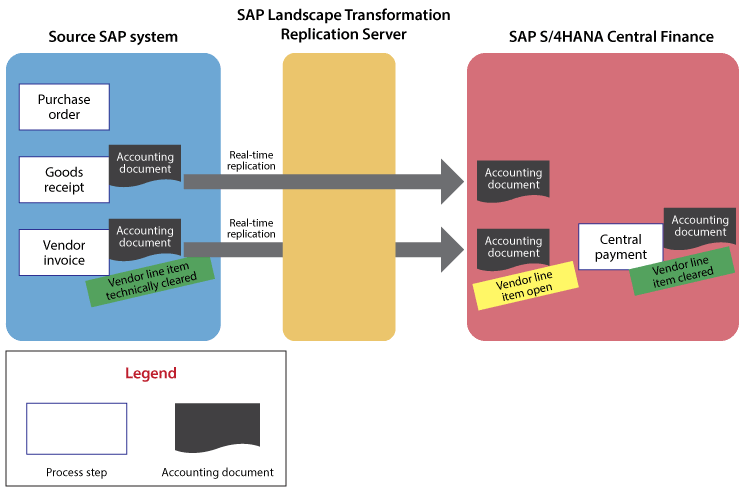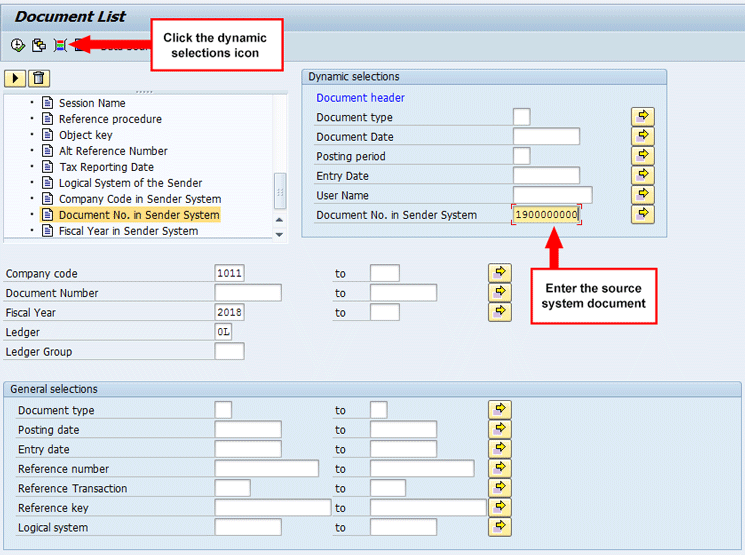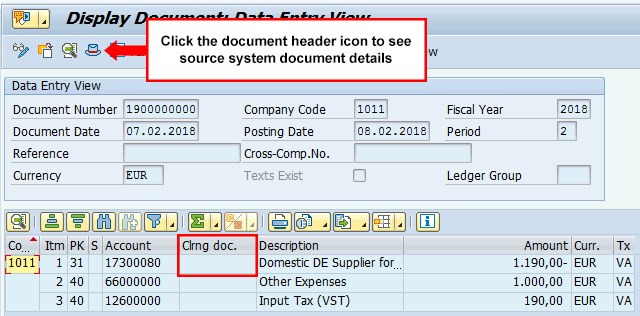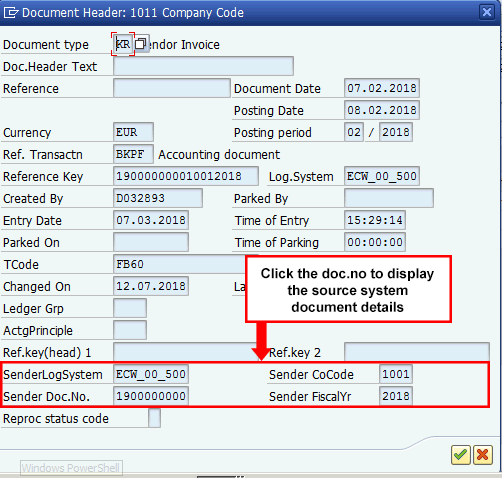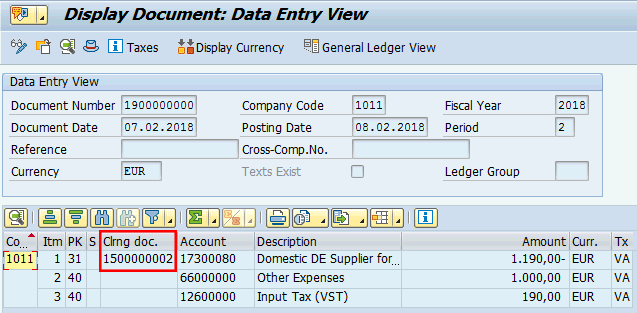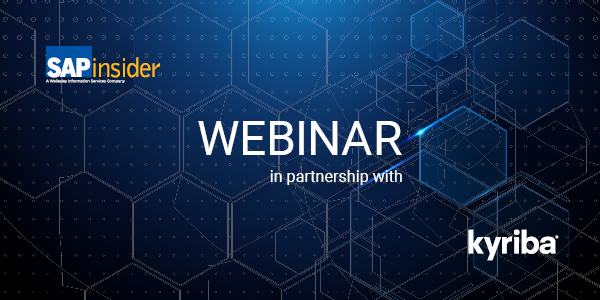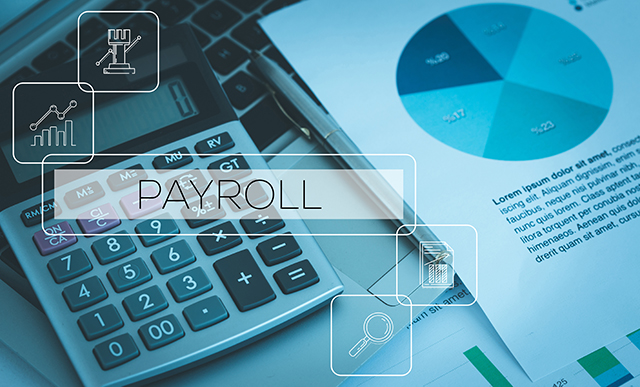Leverage the Benefits of Finance Shared Services with Central Payments Functionality
SAP S/4HANA 1709 Offers Central Payment Functionality for SAP S/4HANA for Central Finance Foundation
In my blog titled “Accelerate Your Finance Shared Services Transformation and Centralized Reporting,” I provided a quick overview of the innovations included in SAP S/4HANA 1709. In this blog, I provide a detailed view of the Central Payments functionality introduced with SAP S/4HANA 1709. This functionality is a key enabler for a central execution of accounts payable (AP) and accounts receivable (AR) processes to leverage the efficiencies of shared services. I focus primarily on the following areas for Central Payments:
- Functionality overview and supported scenarios
- System walkthrough with an example
- Key setup steps
- Key limitations and considerations
Functionality Overview and Supported Scenarios
Explore related questions
With SAP S/4HANA for central finance foundation (Central Finance), all financial postings — Financial Accounting (FI) and Managerial Accounting (CO) documents — are replicated in real time to the Central Finance system. Prior to SAP S/4HANA 1709 in earlier versions, all AR and AP open items were replicated from source systems to the Central Finance system, but could be paid or cleared only in the source systems.
However, with Central Payments functionality in SAP S/4HANA 1709, these open items are replicated from source systems to the Central Finance system and also paid or cleared directly from the Central Finance system. The open items are technically cleared in the source system immediately once they are replicated to Central Finance. Figure 1 provides an overview of this solution for a procure-to-pay process.
The vendor open item generated with invoice posting is automatically technically cleared in the source system. After replication the vendor line item is open in the Central Finance system. After execution of the payment run in Central Finance, the vendor open item is cleared. Note that no information is passed back from the Central Finance system to the source systems on the clearing status of the line item. Similar logic would also apply for any customer invoice or open item replicated from the source system to the Central Finance system for which payment is executed in the Central Finance system.
The activation of the Central Payments functionality is always done for a combination of the source system and source company code. The real status of open items for AR and AP can be tracked only in the Central Finance system with activation of Central Payments. Besides the execution of AR and AP payments, Central Payments enables execution of the following processes in the Central Finance system to leverage the benefits of shared services:
- Central collections and dispute management for receivables
- Central bank account management
- Centralized uploading of bank statements, processing, and cash application for clearing
- Intercompany reconciliation of AR and AP open items
- Centralized receivables and payables reporting
- Integration with SAP In-House Cash functionality for improved working capital management
- Centralized value-added tax (VAT) and deferred tax reporting
A System Walkthrough with an Example
Because Central Payments functionality is activated for a combination of the source system and company code, let’s look at some of the key scenarios for two company codes in a source system. One company code, CC01, does not have Central Payments functionality activated, while another company code, CC02, has Central Payments functionality activated. Table 1 lists some key scenarios with restrictions to consider.
| Scenario | Company code CC01 | Company code CC02 |
| AR/AP invoice posted in the source system | Replicated to Central Finance system | Replicated to Central Finance system |
| The customer or vendor line item remains open in the source system after replication. | The customer or vendor line item is technically cleared in the source system after replication. | |
| The invoice can be paid or cleared only in the source system and not in the Central Finance system. The replicated invoices in the Central Finance system are ruled out for clearing or payment. | The invoice can be paid or cleared only in the Central Finance system and not the source system. | |
|
|
The clearing status can be replicated from the source to the Central Finance system for AR and AP reporting. | The clearing status cannot be replicated back from the Central Finance system to the source system. |
| AR/AP invoice posted directly in the Central Finance system | The invoice can be paid or cleared in the Central Finance system. | The invoice can be paid or cleared in the Central Finance system. |
Table 1
Local and Central Payments scenarios in Central Finance
I enact the Central Payments functionality now using the following example in the system.
Step 1. Post the vendor invoice in the source system. To complete this step execute transaction code FB60 or follow menu path Accounting > Financial Accounting > Accounts Payable > Document Entry > Invoice for a company code with Central Payments activated. In my example I post a simple vendor invoice by debiting an expense G/L account and crediting a vendor. The applicable input tax account also has been debited. In the Enter Vendor Invoice screen (not shown) enter values in the Company Code, Vendor, Invoice date, G/L Account (for expense line item), Cost center, and Amount fields. Select the Calculate tax check box and select a tax code option from the drop-down list. Click the save icon at the top to post the vendor invoice document in the source system.
To view the posted document, execute transaction code FB03 or follow menu path Accounting > Financial Accounting > Accounts Payable > Document > Display. The screen that appears (Figure 2) shows the posted document.
Note that the field under the Clrng doc (clearing document) column, or ABAP table field BSEG-AUGBL (Document Number of the Clearing Document), is automatically filled with the value ALE-extern. This value means that this vendor line item is technically cleared in the source system and cannot be paid in the source system
Step 2. View the corresponding document replicated in the Central Finance system. To complete this step, in the Central Finance system, execute transaction code FB03 or follow menu path Accounting > Financial Accounting > Accounts Payable > Document > Display. In the initial screen that the system displays (not shown), click the Document List button. In the next screen enter selection parameters in the Company code (central finance system), Fiscal Year, and Ledger fields (Figure 3). You also click the dynamic selections icon at the top of the screen and enter the source system document number in the Document No.in Sender System field, as show in Figure 3. For my example enter the source system document number 1900000000 posted in step 1 and shown in Figure 2.
Now click the execute icon to display the replicated Central Finance system document as shown in Figure 4.
In Figure 4, note that fields under the Clrng doc. column are not filled, thereby indicating that the vendor item is open after replication in the Central Finance system for payment or clearing. Click the document header icon to view the source system document details.
Now you can view the source system company code and document number details in the Sender Co.Code and Sender Doc No. fields, respectively, of the document header of the replicated document in the Central Finance system (Figure 5). If you double-click the Sender Doc.No field, you can display the source system document 1900000000 for company code 1001.
Step 3. Execute automatic payment for the vendor invoice. To complete this step, execute transaction code F110 or follow menu path Accounting > Financial Accounting > Accounts Payable > Periodic Processing > Payments. Enter details, such as the run date, identification, company code, the payment method, and the name of the vendor. After you enter all the parameters, save them by clicking the save icon and then click the Pmnt Run (schedule payment run) button to make the payment for the vendor open items.
After you execute the payment run, the vendor open item from the invoice replicated from the source system is cleared. To check this item, execute transaction code FB03 or follow menu path Accounting > Financial Accounting > Accounts Payable > Document > Display. This action opens the screen in Figure 6 in which you can view the payment document. Note that in Figure 6 you can see that the vendor open item from the invoice document is cleared. However, this actual clearing status information cannot be replicated back from the Central Finance system to the source system.
Key Setup Steps
The Central Payments functionality is released in SAP S/4HANA 1709 with a status of Released with Restrictions. Therefore, this functionality it is not activated in the Central Finance system by default. I explain the following key setup steps to complete to activate the Central Payments functionality:
- Raise a message to the SAP system under the component FI-CF-APR for activation of Central Payments functionality
- Apply SAP Note 2346233, which is the pilot note for activation of Central Payments functionality along with other prerequisite notes and manual activities mentioned
- Maintain the customizing for central payment. To complete this step, execute transaction code CFIN_CPAY_CUST or follow menu path Financial Accounting > Central Finance > Central Payment > Activate Central Payment for company codes. In the screen that the system displays (Figure 7) you need to populate the fields under the Logical sys… (logical system) and Source Co… (source company code) columns. In the Scope column, you select Central Payment with VAT Configuration Check Active from the drop-down list of options.
- Check the customizing in the source systems manually. To complete this step, execute transaction code SM30, and in the screen that the system displays (not shown), enter CFIN_CPCTL in the Table/View field and compare the entries in this table with entries in Central Finance system made in step 3.
- In the Central Finance system execute transaction code CFIN_CPAY_CUST and in the screen that the system displays (not shown), click the Reconcile tab at the bottom to compare the customizing and mapping entries between source and Central Finance systems. If there is any inconsistency, then it is displayed in red; otherwise, the entries are shown in green as shown in Figure 7. If there are any inconsistencies click the Sync button (enclosed in the red box in Figure 8) to correct these inconsistencies.
- Activate Single Euro Payments Area (SEPA) direct debit and credit card payment in Central Payments scenario in Central Finance. To complete this step, apply SAP Note 2318106 and prerequisite notes in the source system and apply SAP Note 2318610 in the Central Finance systems. After maintenance of these notes, follow the detailed customizing steps for replication of SEPA mandates as per steps in the Central Finance administrators guide.
Key Limitations and Considerations
I now explain some key points that I recommend you consider before implementing the Central Payments functionality in Central Finance. Table 2 lists various scenarios and their impacts for a company code for which Central Payments is activated.
| Scenario | Key considerations and impact |
| Period-end closing | There is no replication back from the Central Finance system to the source systems, so the period-end closing needs to happen for the relevant company code in the Central Finance system. Also, balance sheet and profit-and-loss (P&L) reporting needs to happen from the Central Finance system. |
| AP and AR reporting | The actual clearing status of open items is only maintained in the Central Finance system, so all AP and AR reporting can only be done from the Central Finance system. Also, all processes that depend on an open item status, such as dunning, collections management, disputes, and cash management, can only be done from the Central Finance system. |
| Down payments and down payment requests | Creation of down payments and down payment requests in integration with a purchase order (PO) or sales order (SO) is not supported in the Central Finance system. However, these can be created without integration with a PO or SO and can also be cleared against invoices replicated from source systems.
Replication of down payments and down payment requests (without reference to a PO or SO) from the source system to the Central Finance system is supported by SAP Note 2533249. With implementation of SAP Note 2624732, down payment requests posted in the source system are cleared technically to avoid duplicate clearing if Central Payments functionality is activated. Down payments executed in the Central Finance system for a down payment request with reference to a PO does not update in the source system the PO history. |
| VAT and withholding tax reporting | VAT and withholding tax reporting needs to be mandatorily done from the Central Finance system. However, there are restrictions on tax reporting from the Central Finance system, as all country-specific reports are not available. Refer to the Central Finance administrators guide for details.
Withholding tax information is not transferred for AP and AR items during the initial load. Withholding tax information is not transferred via document changes through transaction code FB02 in the source system. Payment term and withholding tax change are not possible in the source system on technically cleared items. Refer to SAP Note 2623514 for withholding tax features and restrictions in Central Finance. |
| Logistics processes in source systems | The actual clearing status of AR and AP open items is only reflected in the Central Finance system. Any logistics processes in source systems that depend on clearing status of open items (e.g., reversals or cancellations of AP invoices [transaction code MR8M] or AR invoices [transaction code VF11]) result in inconsistencies between the source and the Central Finance system. |
| Legacy open AP and AR items | The open AP and AR items in the source system before activation of Central Payments functionality in Central Finance need to be paid or cleared in the source systems. |
| Currency decimals | Central Payments functionality does not work if there are fewer currency decimals in the Central Finance system than in the source system. SAP recommends to implement SAP Note 2599964 to prevent postings with fewer decimals in the Central Finance than in the source system. |
Table 2
Key considerations for various scenarios in Central Payments

